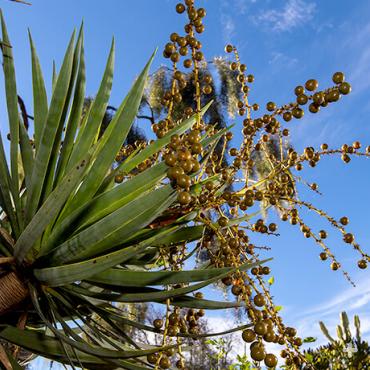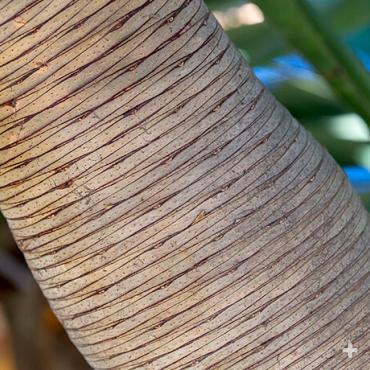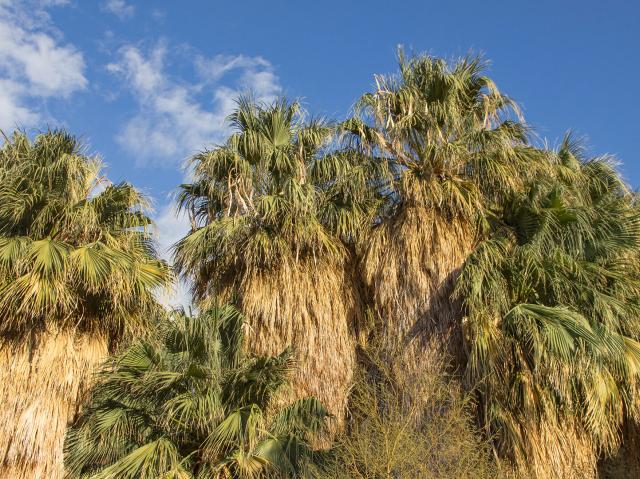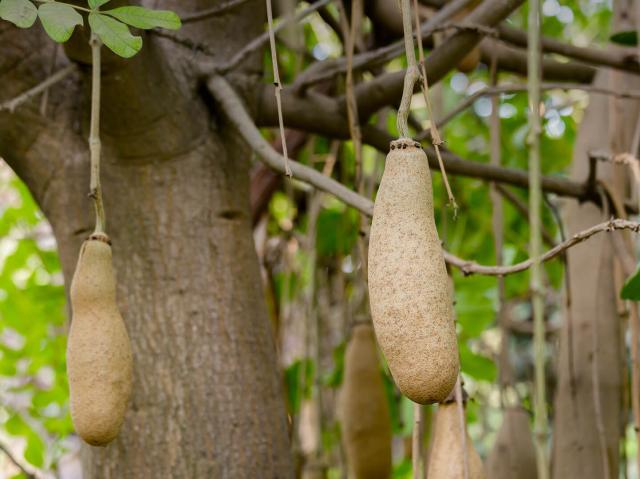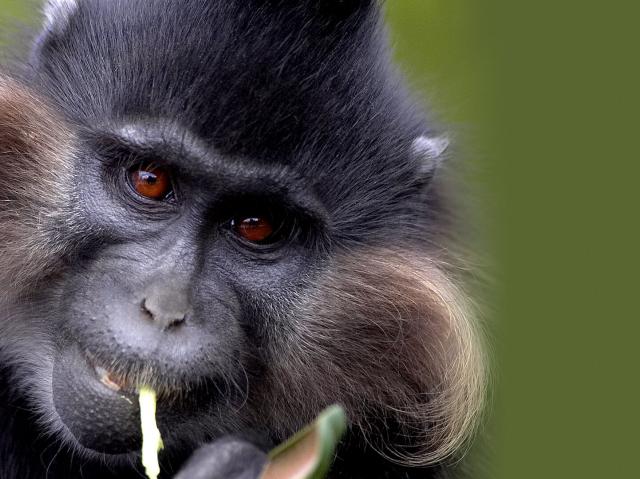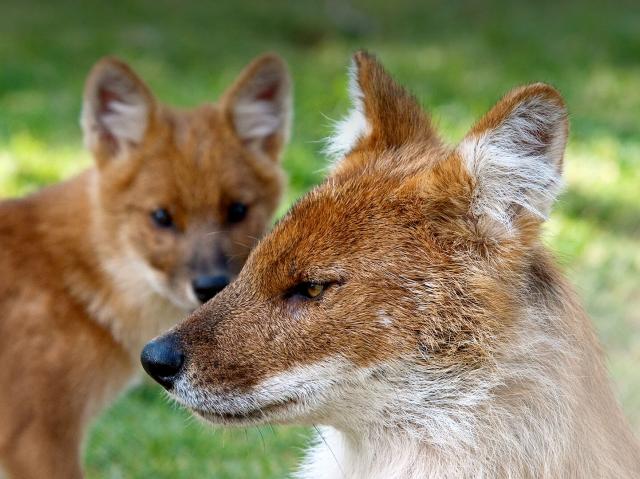
Dragon Tree

- DIVISION: Magnoliophyta
- CLASS: Liliopsida
- ORDER: Asparagales
- FAMILY: Asparagaceae
- GENUS: Dracaena
- SPECIES: draco

OVERVIEW
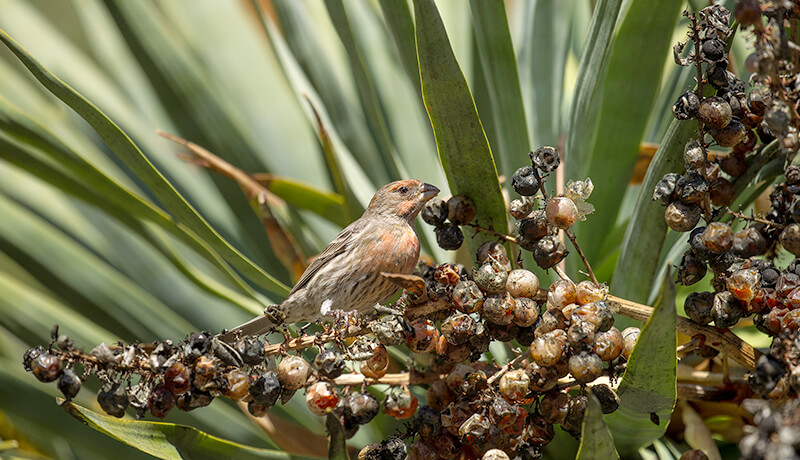
A dragon in the garden? With a fat and scaly trunk, leggy succulent branches that reach skyward to support an umbrella-like canopy of rosette-shaped foliage clusters, stiff blue-green leaves shaped like swords, and greenish-white flowers that are later replaced with dripping strands of red and black berries, the dragon tree Dracaena draco has a look all its own.
Dragon trees are native to Cape Verde, Morocco, Spain’s Canary Islands, and Madeira, Portugal. The dragon tree is still found on five of the seven Canary Islands, but only a few hundred trees are left. New subpopulations were discovered in 1996 in North Africa, in Morocco’s Anti-Atlas Mountains, where thousands reportedly grow along steep, rocky cliffs in hard-to-reach gorges.
They are drought-tolerant, grow in both full sun and partial shade, can tolerate salt spray, and can withstand extreme heat and cold temperatures down to 20 degrees Fahrenheit (-7 degrees Celsius). The tree’s clusters of long leaves collect rain and moisture in the air, to take advantage of the limited water available in their habitat.
CHARACTERISTICS
The dragon tree is known for its thick, red resin, called “dragon’s blood.” The tree got its name from one of Hercules’ legendary adventures. As the tale goes, Hercules was tasked with bringing back three golden apples from the garden of the Hesperides, guarded by a 100-headed dragon. To get the apples, Hercules killed the dragon, spilling the creature’s blood all over the land—and everywhere the dragon’s blood touched the soil, a “dragon tree” was said to sprout. The trunk of the dragon tree somewhat resembles a dragon’s scaly leg, covered with ridges formed by growth-produced leaf scars, continually added year after year.
GROWTH PATTERN
While it may have taken a Herculean feat to slay that legendary dragon, it seems to take just as much effort for a dragon tree to reach maturity. It takes about 8 to 10 years for the slow-growing dragon tree to reach just 2 to 3 feet (0.5 to 1 meter) of height, and 30 years for the tree to reach maturity. New leaves grow only from the very end of the youngest branches of a dragon tree. And those bare limbs grow slowly, to create spreading pedestals for its leafy crown.
Dragon trees, like other large Dracaena species, have a growth pattern called dracoid habitus. Leaf growth and flowering occurs over intervals of about 10 years. The result is the dragon tree’s distinctive umbrella-style crown, created by multiple groups of two branches that grow where flowering has occurred. Some growers estimate the age of the tree by looking at the branching pattern (estimating about 10 years for every two branches), but there is no precise method for determining a dragon tree’s age.
CONSERVATION
Dragon trees are declining in their original wild habitats, and the tree is categorized as Vulnerable on the International Union for Conservation of Nature Red List of Threatened Species. Threats include loss of their habitat to ranching and farming. Changing climate that is drier than in previous years, with shorter periods of low-lying clouds and mist, is causing some dragon trees to stop flourishing in their original habitats. However, the tree is widely cultivated; and although it is slow growing, it is sometimes used in landscaping and as a potted tree that is grown indoors.
While Dracaena draco is one of the largest members of the Dracaena family, there are many other plants in this genus. Its 110 species include many favorite houseplants, such as lucky bamboo (D. braunii or D. sanderiana), corn plant or cornstalk Dracaena (D. fragrans var. lindenii or D. deremensis), Janet Craig compact dracaena (D. deremensis Janet Craig), and the potted palm-like Madagascar dragon tree (D. marginata).
OUR COLLECTION
Dragon trees can be found at both the San Diego Zoo and the Safari Park. At the Zoo, there are at least three large dragon trees on the west side of the Reptile House, one at Reptile Walk, and a few large ones along the bus road at Elephant Odyssey. At the Park, a dragon tree grows along Nairobi Walk, near the Village Playground.
RESIN TO DYE FOR
Dragon’s blood (the tree’s red resin) has been used as a wood stain (particularly for violins), as an ingredient in medicines, as a hair color, and even as a fluid for embalming or mummification. In fact, RMS Titanic was carrying 76 cases of dragon's blood, shipped for Brown Brothers and Company, when the ship sank in 1912.
FIT TO BE TIED
Leaves of the dragon tree were harvested for hundreds of years to provide fiber that was woven into rope.
MONSTER TREE
The largest dragon tree known was called the “Monster of Orotava,” a Canary Islands tree that was said to be more than 68 feet (21 meters) tall, with a 26-foot (8-meter) trunk diameter. It was destroyed by a storm in the late 1800s.
THE DRAGON'S JEWELS
Dragon tree berries hang in clusters that resemble strings of pearls. They remain on the tree for about a year and are eaten by birds, which disperse the seeds.
MOTHER OF DRAGONS?
The Genus name Dracaena comes from the word “Drakaina,” which is Greek for female dragon. The species name draco is the Latin word for dragon.



